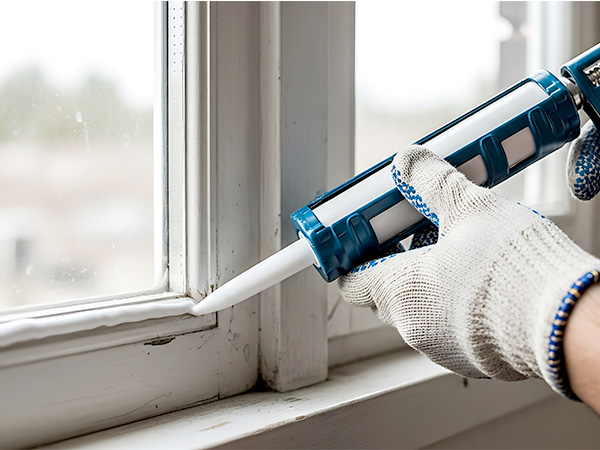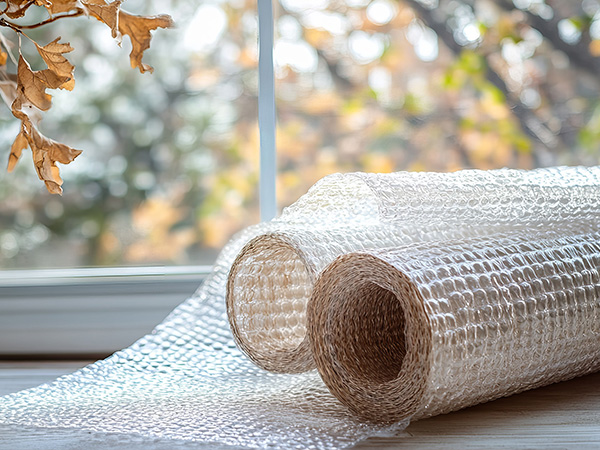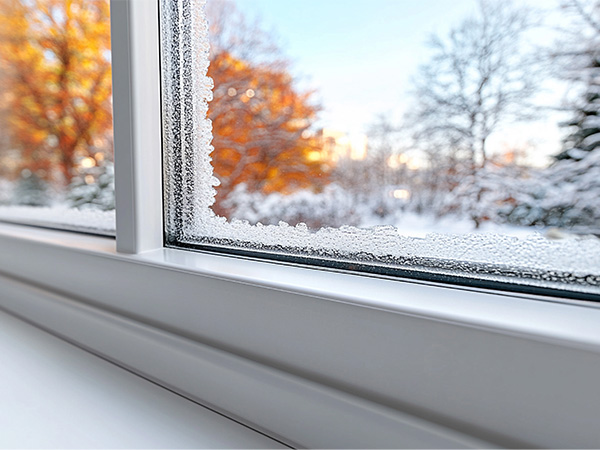If you’re looking into how to insulate windows from cold air, there’s no better and more effective way to do so than replacing poorly performing windows with more energy efficient window solutions.
However, there are simple ways to further insulate even energy-efficient windows, helping them retain more heat and save you even more energy over time.
In this guide, we’ll explore practical tips and techniques to maximise the insulation of your windows, ensuring your home stays warm, efficient, and comfortable all year round, especially when you need it most in the upcoming winter months.
Signs Your Windows Need Replacing
Do you notice condensation between panes, persistent draughts, or cold spots in certain rooms? Cracks, warped frames, or difficulty opening and closing are also red flags when it comes to checking your windows are providing the correct level of insulation.
These common issues indicate inefficient windows and mean it’s time they were replaced. Replacing your windows to energy efficient double glazed windows will upgrade comfort and reduce energy loss through the home.
Replacement vs. Insulation - Cost and Payback
When it comes to keeping your home cosy for the winter, you might wonder whether adding more insulation is enough, or if replacing windows is a smarter investment. Older windows, especially those with single glazing or worn frames, often let more heat escape than insulation alone can fix. While the upfront cost of window insulation can seem appealing, it may not address the underlying inefficiency of old or damaged windows. Calculating the best option comes down to cost versus long-term savings.
Insulation can be cheaper upfront, but if your windows are decades old, replacement often offers a higher return on investment. Modern, energy-efficient windows have better window u values, they reduce draughts, improve comfort, and lower energy bills year after year. Factor in rising energy prices, and you’ll see how upgrading can pay for itself faster than you think.
Top 6 Ways to Insulate Windows for Winter
Even with brand-new, energy-efficient windows, extra insulation during the colder months can make a real difference to all types of windows. Here are six effective ways of how to insulate windows, keeping warm air in and cold draughts out, and they’re suitable for a variety of budgets and situations.
1. Window Film
Insulating window film works by creating an extra layer over your glass, reducing heat loss through conduction. It’s particularly useful for renters or anyone needing a temporary solution without major installation.
Simple to apply with a hairdryer and easy to remove later, it can make surprisingly noticeable improvements to comfort. Ideal for single-glazed windows, it helps maintain warmth while still letting natural light in.
Some films also offer UV protection, helping prevent fading on furniture and flooring. With careful application, window film can cut winter heat loss by up to 30%.

2. Thermal Curtains and Blinds
Thick, dense fabrics and specialised thermal blinds form a barrier that traps warm air inside, preventing it from escaping through the glass. Available in a wide range of colours and styles, they’re a great way to combine function with design.
For south-facing or draughty rooms, heavier fabrics like velvet or lined curtains work best. Thermal blinds are particularly effective for smaller windows or spaces where curtains aren’t ideal.
Beyond insulation, they add an extra layer of privacy and can help reduce external noise. Drawing curtains at night and opening them during sunny days maximises their effectiveness.

3. Caulking and Weatherstripping
Sealing gaps around frames with caulk or weatherstripping is a simple yet highly effective way to prevent draughts and energy loss. Older wooden or metal-framed windows often benefit most, especially if you notice air slipping through cracks.
Weatherstripping is quick to apply and removable, making it a flexible solution for all homeowners. Caulk is more permanent, best suited for long-term insulation projects.
Regularly checking and refreshing seals ensures optimal performance throughout the winter months.

Request Your Free Window Quote
Simply fill in your details for your free, no obligation quotation
4. Bubble Wrap Insulation
Bubble wrap is a cheap and surprisingly effective temporary solution for insulating windows. Simply cut to size and apply with water or double-sided tape to the inside of the glass. The air pockets trap warmth, slowing heat loss significantly.
It’s ideal for rental properties or for windows you don’t want to alter permanently. While not the most visually appealing solution, it can be hidden behind curtains or blinds.
Replacing or reapplying as bubbles deflate ensures it continues to work throughout the season.

5. Secondary Glazing
You may have heard of double and triple glazed windows, but secondary glazing is different. Secondary glazing adds an extra pane of glass or acrylic inside your existing window frame, creating a thermal buffer.
Particularly valuable for older or heritage windows, it improves insulation without replacing the original window. It also reduces external noise, making it a dual-purpose upgrade.
Over time, secondary glazing can pay for itself by reducing energy bills and improving comfort.

6. Draught Excluders and Insulation Tape
Simple strips of draught excluders or insulation tape can plug gaps around frames where air leaks. They’re inexpensive, easy to install, and perfect for immediate improvements.
Ideal for older or imperfectly sealed windows, these solutions can be applied in minutes with minimal fuss. They’re especially effective for sliding sashes, doors, and window bottoms.
Combined with other methods like thermal curtains, they offer a noticeable difference in room warmth. Regular checks and replacements ensure they continue to work efficiently through the cold season.

Why Window Insulation Still Matters
Even with energy-efficient windows or newly upgraded glazing, window insulation can make a noticeable difference in home comfort. Learning how to insulate windows for winter isn’t just for older properties – adding extra layers of protection helps trap warmth, reduce draughts, and maintain a steady indoor temperature.
Beyond comfort, it can contribute to further savings on energy bills, especially during harsh winters when heating demand is high. Effective insulation also protects your home against sudden weather extremes, reducing strain on your heating system and extending the life of your windows. Combined with modern energy-efficient windows, small steps like thermal blinds, draught-proofing, or insulating film add cumulative benefits that make your home cosier and more economical.
Window insulation remains a simple, cost-effective way to enhance warmth, cut costs, and safeguard your home through winter.
REQUEST YOUR FREE QUOTE
Simply fill in your details for your free, no obligation quotation, and click "Get Quote"
Want to speak with an Advisor? Give us a call on 08000 825 825
Our friendly team will be pleased to help with any questions you may have.